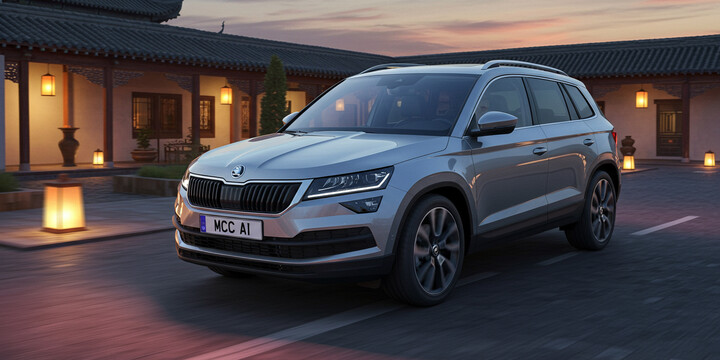
SKODA KAROQ (2017-22) 5DR SUV 4WD 2.0 TDI 190 DPFR SS EU6 SE L DSG AUTO7
The SKODA KAROQ (2017-22) 5DR SUV 4WD 2.0 TDI 190 DPFR SS EU6 SE L DSG AUTO7 is a versatile and popular compact SUV well-suited for families, commuters, or anyone looking for a reliable, practical vehicle with generous space. Positioned as a stylish yet practical SUV in the UK market, the KAROQ offers a comfortable ride with a balanced blend of performance and efficiency. With its distinctive design, spacious interior, and advanced features, it has gained recognition for being both user-friendly and dependable. The model is especially appreciated for its stylish exterior, practical interior, and smooth automatic transmission, making it a great choice for everyday driving and longer journeys.
Known for its durability and fuel efficiency, the SKODA KAROQ (2017-22) is often chosen by those seeking a capable vehicle that handles a variety of terrains thanks to its 4WD system. Its reputation for reliability and relatively low maintenance cost make it stand out among rivals in the SUV class. With an average recorded mileage of around 47,500 miles, and typically being owned by just over one previous driver, this model maintains a good balance of value and condition. Whether used for city commuting, family outings, or outdoor adventures, the SKODA KAROQ (2017-22) 5DR SUV 4WD 2.0 TDI 190 offers a compelling package for those looking to purchase a used, versatile, and well-regarded SUV.

average use

The most recent mileage readings for the SKODA KAROQ (2017-22) 5DR SUV 4WD 2.0 TDI 190 DPFR SS EU6 SE L DSG AUTO7 show an evenly distributed pattern across three mileage ranges: 20,000 to 30,000 miles, 30,000 to 40,000 miles, and 70,000 to 80,000 miles. Each range accounts for approximately one-third of the recorded data (33.3%). This balanced spread suggests a diverse set of vehicles at various stages of their life cycle, from relatively low to higher mileage, with no predominant trend toward a specific mileage range.

vehicle values

The private sale valuation data for the Skoda Karoq (2017-22) 5DR SUV 4WD 2.0 TDI 190 DPFR SS EU6 SE L DSG AUTO7 indicates a fairly evenly distributed range of acceptable sale prices. Specifically, about one-third of vehicles are valued between £13,000 and £14,000, another third between £16,000 and £17,000, and the final third between £22,000 and £23,000. This spread suggests that there are notable variations in vehicle condition, specifications, or perhaps market demand, resulting in three distinct valuation tiers. The data points to a significant jump in valuation between the middle and top ranges, implying that certain features or condition factors significantly elevate the vehicle's value.

production years

The data indicates that among the sampled SKODA KAROQ (2017-22) 5DR SUV 4WD 2.0 TDI 190 DPFR models, the majority—66.7%—were manufactured in 2019, while a smaller proportion—33.3%— were made in 2020. This suggests a higher production or registration focus around 2019 for this vehicle type during the sample period.

colour popularity

The data indicates that the main paint colours for the SKODA KAROQ (2017-22) 5DR SUV 4WD 2.0 TDI 190 DPFR SS EU6 SE L DSG AUTO7 are evenly distributed among Red, Silver, and Grey, each accounting for approximately one-third of the vehicles. This balanced distribution suggests that buyers have diverse colour preferences for this model, with no single colour dominating the market.

ownership cycle

Based on the available data for the Skoda Karoq (2017-22) 5-door SUV 4WD 2.0 TDI 190 DPFR SS EU6 SE L DSG AUTO7, the majority of these vehicles (66.7%) have been registered by two keepers, while a smaller proportion (33.3%) have had three registered keepers. This suggests that most vehicles of this model tend to change hands only once after their initial registration, potentially indicating reasonable ownership stability or vehicle retention within the observed period.

engine choices

The data indicates that all SKODA KAROQ (2017-22) 5DR SUV 4WD 2.0 TDI 190 models in the sample are powered by a 1968cc engine, representing 100% of the vehicles analyzed. Additionally, every vehicle in the sample uses diesel as its primary fuel type. This suggests a consistent engine size and fuel type across this particular model range, likely reflecting the standard specifications offered for this vehicle during that period.












